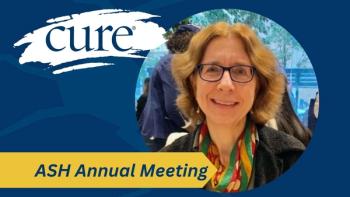
How to Ease the Burden of Cancer Financial Toxicity
The financial navigation program at Taussig Cancer Institute provides patient assistance and helps them understand out-of-pocket costs.
Financial toxicity is an ongoing reality for patients with cancer — even long after treatment ends.
The rising price of care, insurance deductibles, premiums and copayments, combined with other living costs can become a
During the 2019 American Society of Clinical Oncology (ASCO) Annual Meeting, Melissa Monak, a reimbursement manager for the Taussig Cancer Institute at Cleveland Clinic in Ohio, discussed its financial navigation program and how it’s proven to be effective.
CURE®: Can you speak to the rising cost of cancer care and financial toxicity?
Monak: There are a large number of plans out there that have high deductibles and high co-insurances. And cancer treatment itself is really high dollar. Even an individual with really good insurance at 20% co-insurance could have a $5,000 to $10,000 out-of-pocket cost per treatment. That can lead to anxiety for treatment, non-adherence to what (patients) need to do, taking care of their family and maybe not working. That really takes away from them getting well.
What are some ways that cost can prove challenging for patients?
The high out-of-pocket (cost) is an issue and (so is) travel. If you’re possibly the only person at home and you can’t get there, you need a family member to take off work to try and get you there, and that can be a difficulty. There are instances in some research that (show) patients will buy their prescription that they need for their treatment rather than food. We don’t want people to have to decide what to do. We want them to be able to have their treatment and still take care of their family.
Can you tell me more about the goal of your program?
Our goal was to touch as many patients as we can that are going to be receiving treatment. We wanted to make sure that we could reach out to them and explain that there are options. We can help them with copay assistance programs or free drug programs. (There are also) foundations, community centers and philanthropic funds that we can use. We also want to educate them on their insurance because a lot of patients don’t understand. If you don’t do that every day you don’t understand what that cost could possibly be. And by educating them and creating that relationship, we can help them whenever (possible).
What methods did you use to reach your goal?
We started with a first-time treatment report that (got) the patients to our navigators, so we knew who we need to reach out to. We created methods to determine how often we were able to reach out to them and how many patients to make sure that we were achieving our goals. There is a PPE tool within our system that will bring in that insurance as well as that estimate to try to help us provide the out-of-pocket estimate for the patient.
What were some of the results of the implementation?
We started by capturing how many patients we were able to touch. When we initiated it, it was about 48%. We’re now reaching 98% of our patients on a monthly basis and we have done that consistently. We have been able to help patients not only with copay assistance (but also with) travel expenses. We even found apartments for patients (who were) traveling for $35 a night.
What can patients take away from this research?
I want them to know that there are other options out there. Don’t knock a treatment because you’re afraid to leave your family in debt. Don’t choose to not have treatment to make sure you can take care of your family. You can do both and we want to help you do it.
For additional resources related to cancer treatment cost, check out CURE®’s





